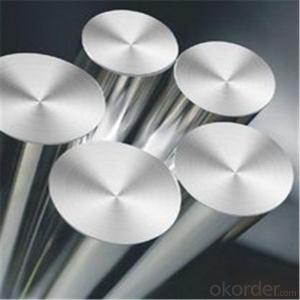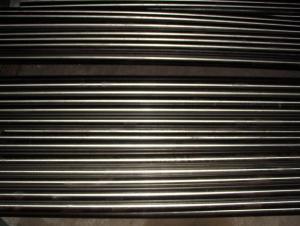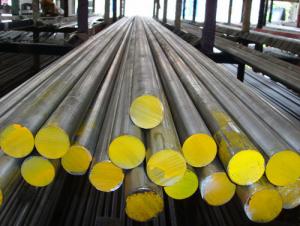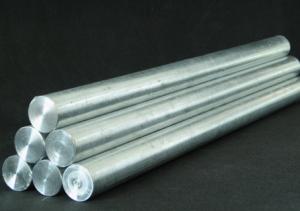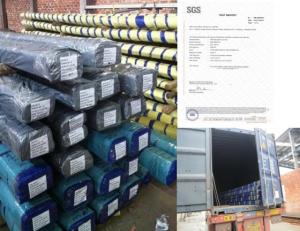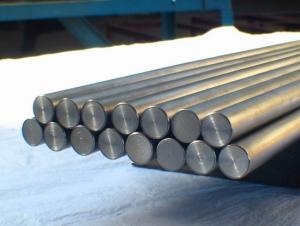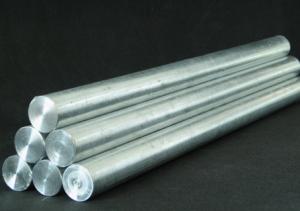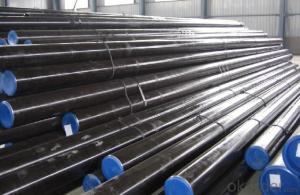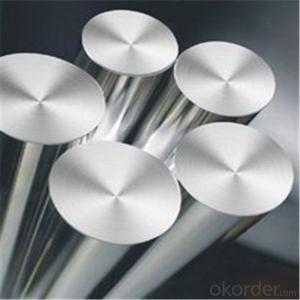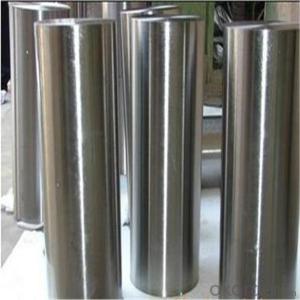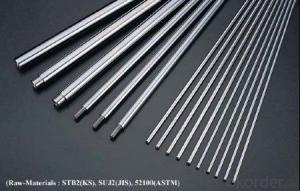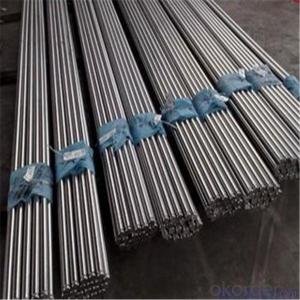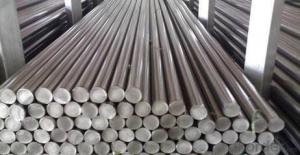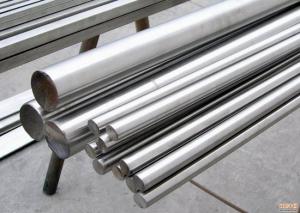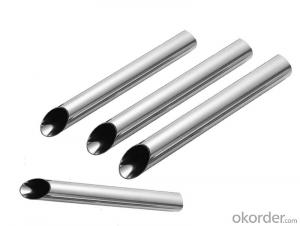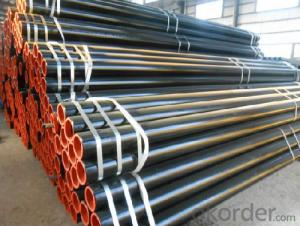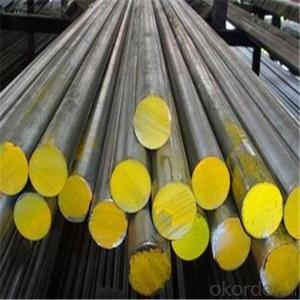316 Stainless Steel Round Bar Price Per kg
- Loading Port:
- Shanghai
- Payment Terms:
- TT OR LC
- Min Order Qty:
- 2 m.t.
- Supply Capability:
- 20000 m.t./month
OKorder Service Pledge
OKorder Financial Service
You Might Also Like
Specification
1.Specifications
Stainless steel is a production which not easy rust, acid resistance and corrosion resistance, so it is widely used in light industry, heavy industry, daily necessities and the decoration industry. As a professional manufacturer, we can manufacture various sizes of stainless steel bars with highest quality and lowest price.
1) Size: 5mm-600mm*6000mm
2) Length: 6m or According to client's requirement .
3) Origin: Shanxi China
4) Payment term: L/C, T/T
5) MOQ: 500KGS
6) Hardness: Hard, half hard, soft, according to customer's request.
7) Packing: Standard seaworthy packing(plastic&wooden) or according to the customer's requests.
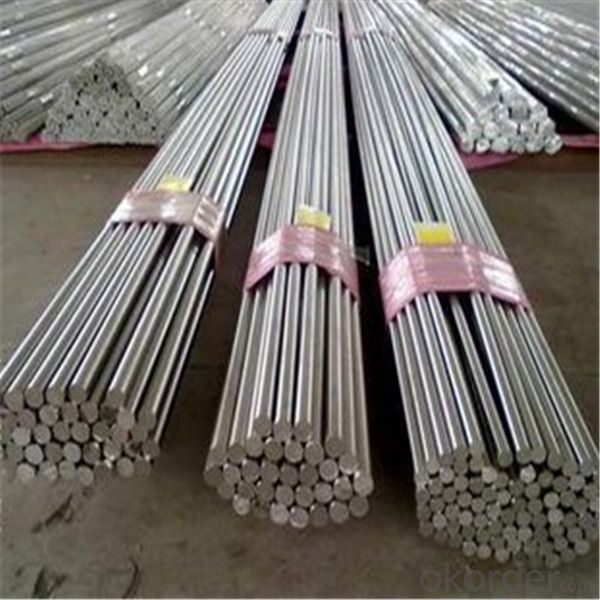
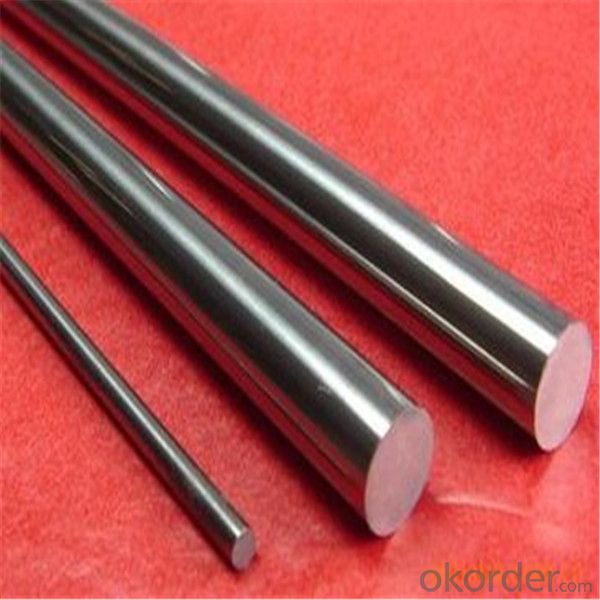
8) Detailed specification
| Surface | Black, peeled, bright, polish/satin, etc. |
| Technique | Forged/Hot Rolled/Cold Drawn |
| Category | 1. Round bar 1)Hot rolled black bar: (5-600)x6000mm or according to your requirement 2)Acid round bar: (5-600)x6000mm or according to your requirement 3)Cold drawn bright bar: (1-200)x6000mm or according to your requirement 4)Polishing round bar: (5-600)x6000mm or according to your requests |
| 2. Square bar 1)Hot rolled black bar: (5*5-600*600)x6000mm or according to your requests 2)Acid square bar: (5*5-600*600)x6000mm or according to your requests 3)Cold drawn square bar: (1*1-100*100)x6000mm or according to your requests 4)Polishing square bar: (5*5-600*600)x6000mm or according to your requests | |
| 3. Flat bar 1)Hot rolled flat bar: (3-30)*(10-400mm)*6000mm or according to your requests 2)Cold drawn flat bar: (3-30)*(10-400mm)*6000mm or according to your requests | |
| 4. Hexagon bar 1)Hot rolled hexagon bar: (5-300)x6000mm or according to your requests 2) Acid hexagon bar: (5-300)x6000mm or according to your requests 3)Cold drawn hexagon bar: (1-200)x6000mm or according to your requests t 4)Polishing hexagon bar: (5-600)x6000mm or according to your requests | |
| 5. Channel bar 1)Hot rolled channel bar: (5-100)x6000mm or according to your requests 2)Acid channel bar: (5-100)x6000mm or according to your requests 3)Cold drawn channel bar: (1-100)x6000mm or according to your requests | |
| 6. Threaded bar 1)Hot rolled threaded bar: (5-100)x6000mm or according to your requests 2)Acid threaded bar: (5-100)x6000mm or according to your requests 3)Cold drawn threaded bar: (1-100)x6000mm or according to your requests | |
| 7. Angle bar 1)Hot rolled angle bar: (16-200)x(16-200)x(3-18)x(3000-9000)mm or according to your requests 2)Acid angle bar: (16-200)x(16-200)x(3-18)x(3000-9000)mm or according to your requests 3)Cold drawn angle bar: (16-200)x(16-200)x(3-18)x(3000-9000)mm or according to your requests | |
| Diameter± | ± 2% tolerance can reach the industry standard |
| Quality | Our production equipment 24 hours of continuous temperature work, to ensure the unity of the product roundness, elongation, tensile strength and yield strength. Welcome customers to our company to detect the products before shipment. For the customers who are not inconvenient, quality assurance can be laid down in the contract, we will take charge of the returning and shipping fee if there is any problems of the product quality, so it will dismiss any of your worry about our products. |
| Package | Standard seaworthy packing(plastic& wooden) or according to the customer' s requests |
| Delivery time | 7-20days, according to the quantity |
| Productivity | 1500 tons/month |
| Remarks | OEM/Sample/Mixed item/Factory visit are welcome |
- Q: Are stainless steel bars resistant to embrittlement?
- Yes, stainless steel bars are generally resistant to embrittlement. Embrittlement is a phenomenon where a material becomes brittle and prone to cracking under certain conditions. Stainless steel, due to its unique composition, has a high resistance to embrittlement compared to other types of steel or metals. This is primarily because stainless steel contains a minimum of 10.5% chromium, which forms a protective oxide layer on the surface of the metal. This oxide layer acts as a barrier, preventing harmful substances from penetrating the steel and causing embrittlement. Additionally, stainless steel bars can be heat-treated to further enhance their resistance to embrittlement. However, it is important to note that under specific conditions, such as exposure to certain corrosive environments or high temperatures, stainless steel can still experience embrittlement. Therefore, it is crucial to carefully select the appropriate grade of stainless steel and to consider the specific operating conditions when using stainless steel bars to ensure their long-term durability and resistance to embrittlement.
- Q: Can stainless steel bars be coated?
- Indeed, it is possible to coat stainless steel bars. Coating stainless steel bars is widely practiced to elevate their aesthetic appeal, offer protection against corrosion, or enhance their mechanical attributes. Numerous coating alternatives are accessible for stainless steel bars, such as electroplating, powder coating, PVD (Physical Vapor Deposition) coating, and specialized coatings. These coatings can be administered to stainless steel bars to alter their color, amplify their resistance to rust and corrosion, or bolster their durability. The selection of coating is contingent upon the particular application and the intended outcome for the stainless steel bars.
- Q: Do stainless steel bars have good impact resistance?
- Yes, stainless steel bars have good impact resistance. Due to their composition and properties, stainless steel bars are known for their high strength and toughness, enabling them to withstand significant impacts without deformation or breakage.
- Q: Are stainless steel bars suitable for the production of turbine rotors?
- Yes, stainless steel bars are suitable for the production of turbine rotors. Stainless steel is known for its high strength, corrosion resistance, and ability to withstand high temperatures, making it an ideal material for demanding applications like turbine rotors. Additionally, stainless steel's excellent mechanical properties ensure the durability and performance of the rotors, making them suitable for use in various types of turbines.
- Q: What are the weight calculations for stainless steel flat bars?
- The weight calculations for stainless steel flat bars can be determined by multiplying the width, thickness, and length of the flat bar by the density of stainless steel. The density of stainless steel varies depending on the grade and composition, but typically ranges between 7.9 and 8.2 grams per cubic centimeter (g/cm³). To calculate the weight of a stainless steel flat bar, you can use the formula: Weight (in kilograms) = Width (in centimeters) × Thickness (in centimeters) × Length (in centimeters) × Density (in g/cm³) / 1000 For example, let's say we have a stainless steel flat bar with a width of 5 centimeters, a thickness of 0.5 centimeters, and a length of 100 centimeters, and we are using a density of 8.0 g/cm³: Weight = 5 cm × 0.5 cm × 100 cm × 8.0 g/cm³ / 1000 = 20 grams Therefore, the weight of this particular stainless steel flat bar would be 20 grams.
- Q: Can stainless steel bars be used in the power plant industry?
- Yes, stainless steel bars can be used in the power plant industry. Stainless steel is known for its excellent corrosion resistance, high strength, and durability, making it a suitable material for various applications in the power plant industry. These bars can be used for constructing structural elements, such as support beams, frames, and platforms, as well as for manufacturing equipment like turbines, boilers, heat exchangers, and condensers. Stainless steel bars are also commonly used in the construction of piping systems, where their resistance to corrosion and high-temperature environments is crucial. Additionally, stainless steel bars can withstand the extreme conditions found in power plants, including high pressure, elevated temperatures, and exposure to various chemicals, making them a reliable choice for this industry.
- Q: Are stainless steel bars suitable for construction applications?
- Stainless steel bars are an excellent choice for construction applications. This material offers numerous advantages for construction projects. Firstly, stainless steel bars possess exceptional resistance to corrosion, making them perfect for environments with high humidity, moisture, or exposure to chemicals. This corrosion resistance ensures that the bars will maintain their strength and integrity over time, reducing the need for maintenance and replacement, therefore cutting costs. Moreover, stainless steel bars have remarkable strength and stiffness, enabling them to withstand heavy loads and provide structural support. This makes them suitable for various construction applications such as beams, columns, and reinforcement. Additionally, stainless steel bars exhibit outstanding fire resistance, making them a safe option for buildings where fire protection is crucial. Another benefit of stainless steel bars is their aesthetic appeal. They have a sleek and modern appearance that can enhance the overall design of a structure, making them a popular choice in architectural applications. Furthermore, stainless steel bars are environmentally friendly. They are 100% recyclable, and their production process requires less energy compared to other construction materials. This makes stainless steel a sustainable choice for construction projects, aligning with green building practices. To sum up, stainless steel bars are highly suitable for construction applications due to their corrosion resistance, strength, fire resistance, aesthetic appeal, and eco-friendliness. Their durability and versatility make them an excellent choice for a wide range of construction projects, ensuring longevity and reliability.
- Q: Can stainless steel bars be used in storage tanks?
- Certainly, storage tanks can utilize stainless steel bars. The utilization of stainless steel in storage tank construction is prevalent owing to its exceptional resistance to corrosion. Its remarkable durability makes it suitable for extended periods, even in severe conditions, rendering it the perfect material for storing a range of liquids and gases. Moreover, stainless steel bars can be effortlessly welded or fabricated to achieve the desired tank dimensions, guaranteeing a dependable and secure storage option.
- Q: Are stainless steel bars suitable for harsh chemical environments?
- Indeed, harsh chemical environments find stainless steel bars to be quite suitable. Due to their remarkable resistance to corrosion, stainless steel bars prove to be an ideal choice for utilization in corrosive settings that frequently involve chemical exposure. Their exceptional resistance extends to a broad spectrum of chemicals, encompassing potent acids, alkalis, and organic compounds. Moreover, stainless steel bars are renowned for their robustness and longevity, enabling them to endure the rigorous conditions of chemical environments without succumbing to deterioration or compromising their structural integrity. Consequently, stainless steel bars emerge as a dependable selection for applications within harsh chemical environments.
- Q: What are the different types of stainless steel bars used in pharmaceutical equipment?
- There are several different types of stainless steel bars commonly used in pharmaceutical equipment due to their excellent corrosion resistance and hygienic properties. Some of the most commonly used types include: 1. Austenitic Stainless Steel: This type of stainless steel is the most widely used in pharmaceutical equipment due to its high corrosion resistance and excellent formability. It contains high amounts of chromium and nickel, making it resistant to various chemicals and ideal for applications that require good hygiene. 2. Martensitic Stainless Steel: This type of stainless steel is known for its high strength and hardness. It contains a higher carbon content compared to austenitic stainless steel, which gives it its characteristic strength. Martensitic stainless steel is commonly used in pharmaceutical equipment where high mechanical strength is required. 3. Ferritic Stainless Steel: Ferritic stainless steel is known for its excellent resistance to stress corrosion cracking and high resistance to oxidation. It contains high levels of chromium, which provides good corrosion resistance. Ferritic stainless steel is commonly used in pharmaceutical equipment for applications where high temperature resistance is required. 4. Duplex Stainless Steel: Duplex stainless steel is a combination of both austenitic and ferritic stainless steels, providing a balance between their properties. It offers excellent corrosion resistance, high strength, and good weldability. Duplex stainless steel is commonly used in pharmaceutical equipment where both corrosion resistance and strength are required. The specific type of stainless steel bar used in pharmaceutical equipment will depend on the specific requirements of the application, such as the type of chemicals or substances it will come into contact with, the level of hygiene required, and the mechanical strength needed.
Send your message to us
316 Stainless Steel Round Bar Price Per kg
- Loading Port:
- Shanghai
- Payment Terms:
- TT OR LC
- Min Order Qty:
- 2 m.t.
- Supply Capability:
- 20000 m.t./month
OKorder Service Pledge
OKorder Financial Service
Similar products
Hot products
Hot Searches
Related keywords
